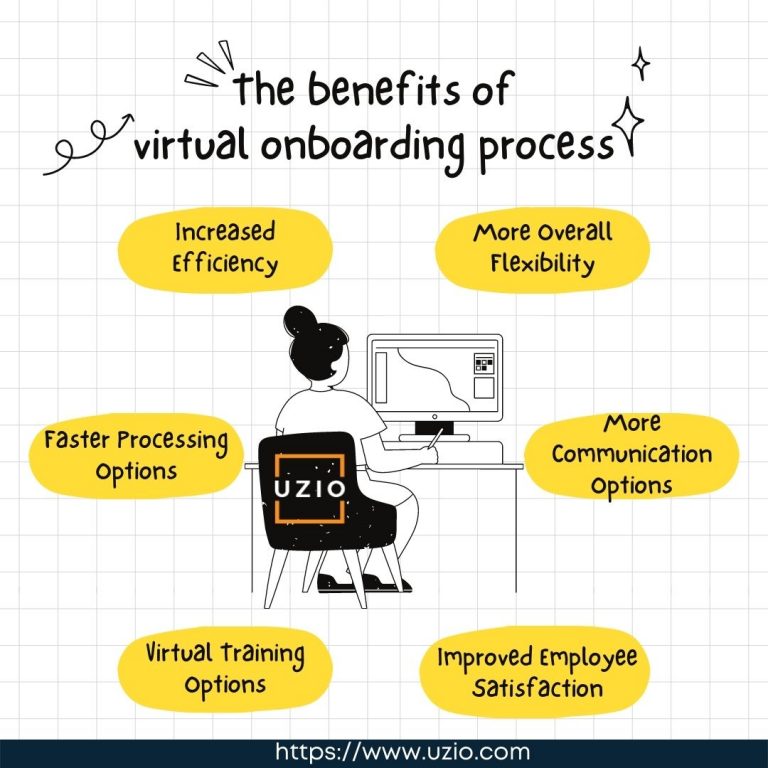2020 was a huge turning point in the way companies managed business.
Companies that had only previously considered remote operations were now forced to put them into action because of the pandemic. The majority of the workforce (many who had never even considered remote work) were now working from home.
While the world is still adjusting to the “new normal” and continuing to embrace remote operations as a whole, there are certain factors common among many businesses that have room for improvement. Business leaders need to adapt to the new manner of handling their businesses, and a great place to start is with company onboarding procedures.
The hiring of new employees was not stopping even during the pandemic.
Successful onboarding ensures a clear path for employees as they begin their work at a new company. Even in these difficult times, remote business operations are no excuse for a complicated onboarding process.
New employees expect the hiring and training period to be as smooth as before, so it’s up to the organization to ensure this process is successful.
By focusing on optimizing the onboarding processes and providing new employees with tools necessary for their success, employers can easily make themselves more attractive to prospective employees than other companies that are yet to do so.
Like it or not, remote work is here to stay, so businesses need to adjust to this new workflow. The adjustment process to this online working culture begins with setting up a successful onboarding process for new employees and providing necessary tools to the current employees to work from home.
Fortunately, virtual onboarding is very much similar to in-person onboarding at the office.
The main difference is that interviews and initial training are done via video calls & video meetings instead of in-person meetings.
Of course, remote work doesn’t mean that company culture goes out the window!
In fact, company culture expands far beyond the walls of any workplace and is more critical than ever as your company transitions to a fully-remote working environment.
Let us check out the major Organizational benefits of Virtual Onboarding of Employees:

1. Increased Efficiency
Arguably the biggest benefit of a virtual onboarding process is increased efficiency.
Since forms are managed digitally rather than on paper, this means new employees can fill out forms faster and with less repetition.
Many times, the same information is required on various forms, which normally would need to be written down multiple times.
However, since forms are being filled out digitally, new employees can take advantage of the “copy and paste” functions, saving them from writing (or typing) the same information over and over again on multiple forms.
2. More Flexibility to Compare Available Perks
Benefits offered by employers are some of the most commonly sought-after perks that potential employees are looking for. Many forms traditionally filled out by hand, such as health insurance paperwork, can now be filled out digitally.
This reduces the processing time, and also allows the worker to compare multiple plans easily without shuffling through piles of paperwork.
If possible, you should include benefits forms as part of your virtual onboarding process.
3. Faster Processing Options
When filling out these forms, a signature will be needed.
Fortunately, there are many e-signature solutions available online, which makes it easy for new hires to read and sign any necessary hiring documents.
As the information is filed digitally and available in an instant, using e-signatures for your paperwork is a far superior solution to manually managing onboarding paperwork.
4. More Communication Options
New employees need active communication and instruction as they adjust to their new responsibilities.
Since in-person help was not an option, you can assign new employees a “welcome buddy” to provide direct support on their first day, who they can easily communicate with via chat.
A friendly face (even behind a screen) will help new employees feel welcome and comfortable within your company.
While this may not seem like a traditional introduction to you, the age of social media has made online introductions commonplace, so it’s unlikely that the new employee will have any trouble utilizing this approach.
5. Virtual Training Options
A virtual workplace allows new employees to quickly get assistance throughout the workday, and you can even create “meet and greet” roadmaps to introduce employees to their fellow workers.
This is beneficial beyond comradery – it also lets employees know who to turn to when they need help going forward!
If an employee is struggling to adjust to their new work environment, you can always assign them a virtual mentor to speed up the learning process while allowing space for growth and improvement.
Ready to go digital? Give virtual operations a try with a free 30-day trial from UZIO!
Final words
When you hire a new employee, it’s important to get them up to speed as quickly as possible, so they can start making valuable contributions immediately.
For hourly employees, you can accomplish this through an orientation of the workplace and the role they’ll be playing.
But what about salaried and office workers?
When you hire someone who doesn’t work on-site, it can be difficult to prepare them effectively, which results in added time and expense before they are productive members of your team.
In this blog we have discussed the benefits of virtual onboarding that will help you get new hires productive faster.
If you’re not sure about Employee onboarding process, check out our step-by-step guide: How to Create an Employee Onboarding Process That Doesn’t Fall Flat.















